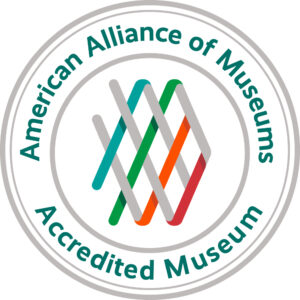 The Mark Twain House & Museum has again achieved accreditation by the American Alliance of Museums, the highest national recognition afforded the nation’s museums. Accreditation signifies excellence to the museum community, to governments, funders, outside agencies, and to the museum-going public. All museums must undergo a re-accreditation review at least every 10 years to maintain accredited status.
The Mark Twain House & Museum has again achieved accreditation by the American Alliance of Museums, the highest national recognition afforded the nation’s museums. Accreditation signifies excellence to the museum community, to governments, funders, outside agencies, and to the museum-going public. All museums must undergo a re-accreditation review at least every 10 years to maintain accredited status.
Alliance Accreditation brings national recognition to a museum for its commitment to excellence, accountability, high professional standards, and continued institutional improvement. Developed and sustained by museum professionals for more than 45 years, the Alliance’s museum accreditation program is the field’s primary vehicle for quality assurance, self-regulation, and public accountability. It strengthens the museum profession by promoting practices that enable leaders to make informed decisions, allocate resources wisely, and remain financially and ethically accountable in order to provide the best possible service to the public.
“The Mark Twain House & Museum was first accredited in 1974,” said Executive Director Pieter Roos. “The re-accreditation confirms the continuing excellence of our stewardship of the historic house, our popular tours, and the educational and cultural programs that speak to the enduring legacy of author Mark Twain.”
Accreditation is a very rigorous but highly rewarding process that examines all aspects of a museum’s operations. To earn accreditation a museum first must conduct a year of self-study, and then undergo a site visit by a team of peer reviewers. AAM’s Accreditation Commission, an independent and autonomous body of museum professionals, considers the self-study and visiting committee report to determine whether a museum should receive accreditation.
“Accredited museums are a community of institutions that have chosen to hold themselves publicly accountable to excellence,” said Laura L. Lott, Alliance president and CEO. “Accreditation is clearly a significant achievement, of which both the institutions and the communities they serve can be extremely proud.”

